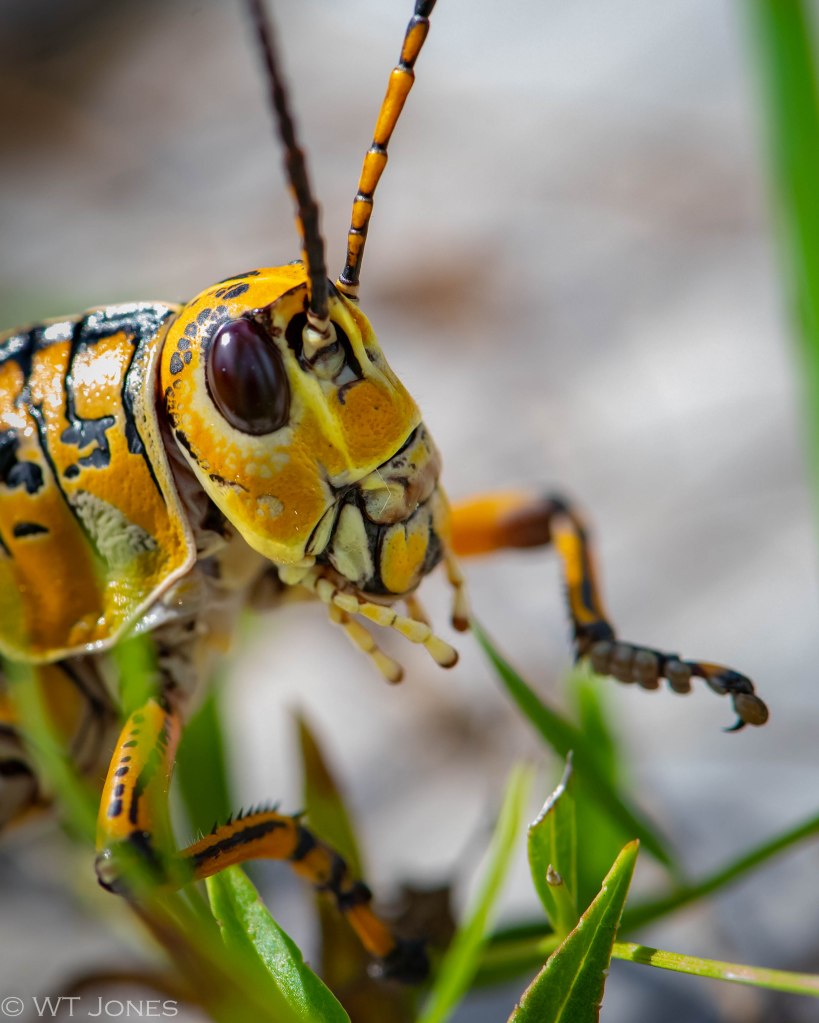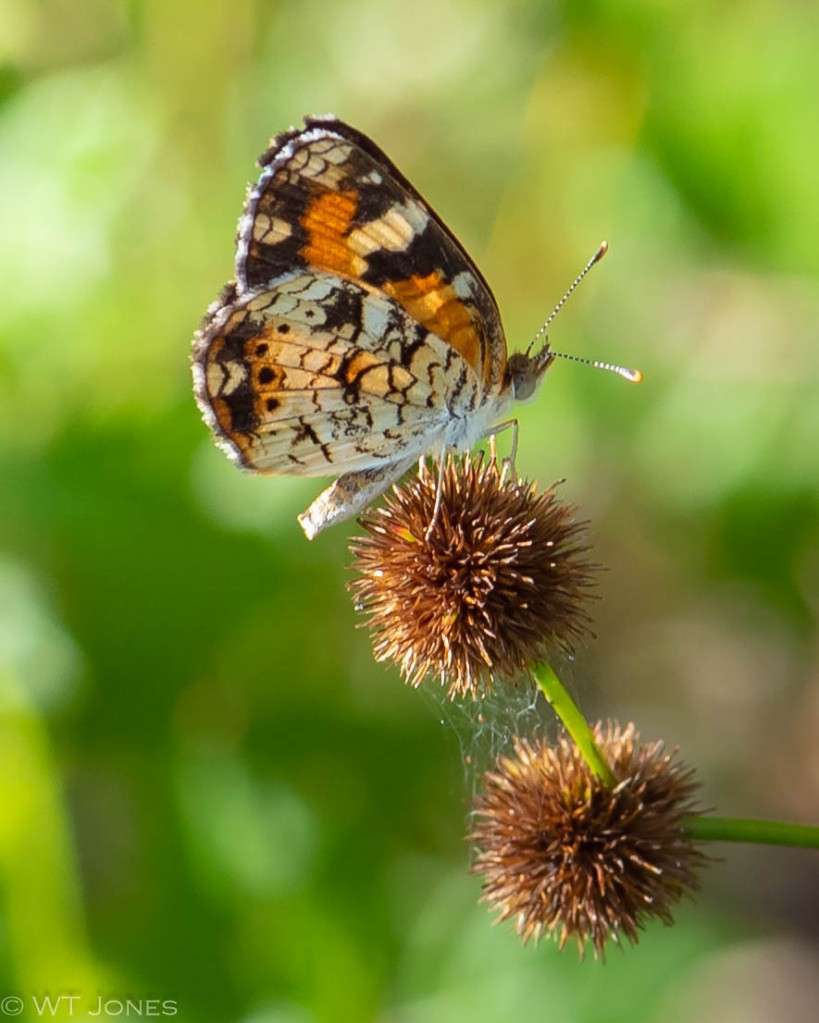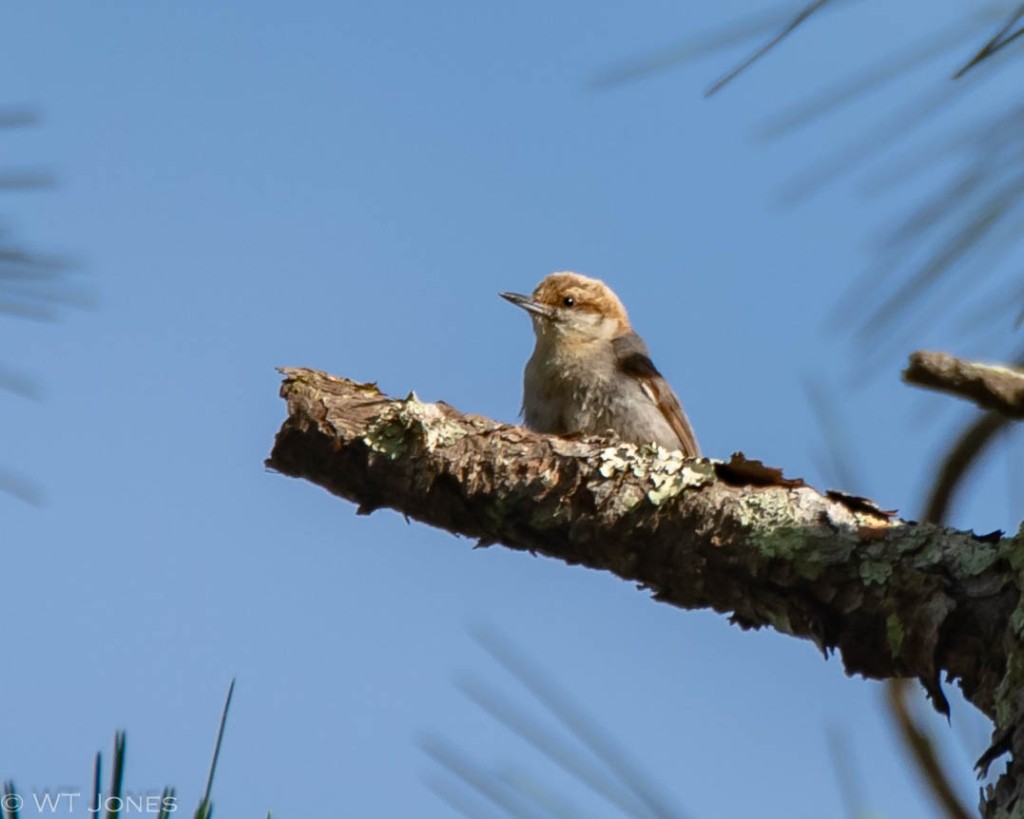Swamp Road
Header Image: Pygmy Rattlesnake
Hot. Wet. Oppressive. Taking a breath almost requires effort. In the time it takes to walk from the car to the trailhead, your clothes are soaked through from the humidity. There is not even a hint of a breeze. We are in central Florida. The Green Swamp surrounds us. It is summer.
Glorious!
It is that time of year we simply LOVE to be outside! The stillness of early mornings allows us to hear the Common Nighthawks “booming” over the pine forest. Distant drumming by a Pileated Woodpecker changes in pitch as he tries to locate just the “right” sound which will attract a mate. Cicadas buzz in waves which wash over us like warm waves breaking on a beach. Shortly after lunch, dark clouds will gather on the horizon as thunderstorms move across the peninsula dumping fresh water on the land which will filter into the underground aquifer providing life-sustaining liquid to over 20 million Floridians.
On this summer day, we are in the Richloam Wildlife Management Area in Sumter County, Florida. Old logging roads crisscross the Green Swamp and provide slightly different environments for us to explore. We begin near a wetland which is bordered by a meadow and a small pond. A short drive through a section of hardwood trees (oak, hickory, bay) brings us to a vast pine forest. The understory of palmetto is interrupted by occasional potholes which fill with water during the wet season. Another mile along the road and we are crossing a small river and are enveloped in what most people think about when envisioning a “swamp”. Large cypress trees standing in shallow water, alligators slinking in nearby weeds, herons and egrets wading as they hunt for breakfast. Beyond the “wet” swamp, we enter upland pine woods where there are many open areas, lots of white sand and a variety of plant life.
Gini had thoughtfully (as usual) packed a bit of nourishment which we enjoyed while Eastern Bluebirds and Carolina Chickadees flew back and forth in a stand of tall pines. The strong scent of the conifer trees, bright blue sky and a perfect companion made it difficult to continue. Can’t we just stay here a few more minutes/hours/days? Okay. A few more minutes. She is SO good to me.
Somehow, I remembered to take a few pictures.
The grass adjacent to a wetland was an agreeable hunting ground for a Familiar Bluet (Enallagma civile), a small and fairly common damselfly in this area. Laying down in the damp grass provided a unique perspective, not only for the damsel, but for all of the surrounding habitat. Getting up – we shall not mention the process.


Although we didn’t spot the bright red male Scarlet Skimmer (Crocothemis servilia), the female is quite attractive, thank you very much.

Our largest grasshopper, the Eastern Lubber Grasshopper (Romalea microptera), wasn’t interested in posing for a portrait. She held still just long enough for an intimate close-up then exited into the tall weeds never to be seen again.

With a total length of about one inch (25-27 mm), the Little Blue Dragonlet (Erythrodiplax minuscula) is the second-smallest dragonfly in North America. I chased after this pretty female for awhile before she sat still for a microsecond.

At the edge of a pond, we found a large male Gray-green Clubtail (Arigomphus pallidus). We normally only see these dragons on the ground but this one obliged by perching on a nice twig over the water.

Dragons in flight. Not my forte, but I keep trying. A very unique wing pattern helps identify a male Prince Baskettail (Epitheca princeps). They fly back and forth tirelessly patrolling a specific area to protect a female during her egg-laying efforts.

Fortunately, we found this fellow crossing a nice white road. The Pygmy Rattlesnake (Sistrurus miliarius) is well-camouflaged for his typical habitat on the pine forest floor. This is an immature snake. Soon, the yellow tail will evolve into the namesake “rattles” which will allow him to “buzz” and warn us of his proximity when we pass by here next year.


With our rainy season comes abundant new life. Insects of all types flourish during this season. A particularly beautiful example is a Phaon Crescent (Phyciodes phaon), a small butterfly with a wonderful wing design.

Splashes of color greeted us all throughout the morning. We found a small bed of Yellow Milkwort (Polygala rugelii) providing a bit of sunshine among the dull green palmetto fronds. Beautiful from a distance, a close-up of a flower seemed like a completely different world.


Perhaps not as showy as the milkwort above, a Rosy Camphorweed (Pluchea baccharis) still has an attractive quality all its own. This is actually a member of the sunflower family and they are sometimes referred to as “stinkworts”. When crushed, the leaves give off a unique odor.


At one time, the Tarflower (Bejaria racemosa) was thought to be an insectivorous plant due to the sticky nature of its stems and flower parts. Instead, this turns out to be a defensive strategy used to prevent physical damage from some insects. This woody evergreen shrub can grow to ten feet tall and provides a load of beautiful blooms throughout the summer.


A new plant for us! The Clustered Bushmint (Hyptis alata) is pretty unique looking. The four stamens of the flower remain hidden until a pollinator lands on the bloom. As one can tell from the name, this member of the mint family emits a slight aroma when crushed which is reflected in its alternate name, “Musky Mint”. Whatever you call it, insects love it.


Gini’s outstanding hearing skill led us to a section of older pine trees where we found what was likely a couple of family groups of Brown-headed Nuthatches (eight individuals). Typical of small birds, this species has an extremely aggressive nature and they wasted no time letting us know we were trespassing!

It’s possible one must be a native to tolerate our hot, humid weather. Having said that, we give thanks to the inventor of modern air-conditioning! If you can stand to be warm and damp, find a road through a swamp to explore!
Enjoy your search for a natural place and come back for a visit!
As someone who has a love of snakes (although a healthy respect for the venomous ones), Wally, I was immediately grabbed by that wonderful header image. What a handsome creature!
Your excellent photography and outstanding macro work on those fabulous insects has me wishing I could visit this place – until I think of the temperatures and humidity. We are uncomfortably sweltering here with temperatures reaching 30°C (86°F) and 80% humidity, so I am relatively sure we could not survive your conditions.
I’m sorry for the late visit. Lindsay and I have just returned from a week in the New Forest in the south of England.
My very best wishes to you and Gini – – – Richard
LikeLike
The little Pygmy Rattler can inflict a very painful bite but, thankfully, its venom glands are very small so you won’t be injected with too much poison. There have been no recorded fatalities from their bite.
There. Now we can feel better about chasing one through the forest.
Thank you again for the very kind words about my attempts to obtain images of insects. I have reached the age where I need to concentrate on those species which perch at eye level. Gini is getting tired of helping me up from the ground.
No worries about a “late visit”! My goodness, you two were off on another adventure! And THAT is ALWAYS a priority!
Gini and I hope both you and Lindsay are resting well and we shall wait right here until photographs and narratives appear detailing your exploits.
LikeLike
Your header image of that snake stopped me in my tracks. I spent a couple of minutes just admiring the details, and thinking about how much more appealing a pygmy snake seems than our eight-to-ten-footers. When I moved on and found that second photo of the Familiar Bluet and was back in Casablanca, thinking, “No, here’s looking at YOU, kid!”
The Hyptis alata seemed familiar. Its flowers reminded me of American Germander, as they should have. Both are in the mint family, and not only that, your clustered bushmint is listed for the area that includes the Brazoria refuge. Now, I’ll have to look for it.
I’ve come across another plant that uses stickiness as a defense. I can’t remember what it was, now, but I do remember that I found it at the Sandyland Sanctuary in east Texas. That’s an area similar to what you’ve described here — white sand, pines, and such. Now I’m wondering if the stickiness and the environment go together. What I do know is that when I visit the Sandyland spot in summer, I’m pretty darned sticky myself.
LikeLike
Whoops. You can close that tag if you like!
LikeLike
Thank you for the kind words!
The young Pygmy Rattlers look very much like young Eastern Black Racers and both like to hang around suburban and rural wood and brush piles. They really are handsome!
It’s amazing how large the mint family is! Will be interested to know when you recall the name of your Sandyland sticky plant. We had good friends that lived in that area and had a great time exploring.
Summertime. The sticky season.
It is almost a brand new week! What will we find tomorrow?
LikeLike
Some great captures for a hot, muggy morning, Wally! Love the macros!!
LikeLike
Thank you very much, Donna!
By “hot, muggy morning”, I’m sure you meant “just another June morning in Florida”. 🙂
LikeLiked by 1 person
The Richloam WMA seems a glorious place. Thanks for posting all of your photos and info. I especially liked the photos of the Pygmy Rattler – I’ve never spotted (or heard) one in the wild.
LikeLike
It’s a neat place to roam around, Ed. Several different habitats to explore. Those small rattlers are good at concealment, unless they’re crossing a white road!
LikeLike
Wally, I do hope that you explained to Gini and then apologised about how you chased after that pretty little female. And all to get a photograph – Shame on you, young man.
And while the rattlesnake is very fetching, even attractive, I think that your outstretched hand next to it would give your readers some semblance of size. I mean, come on, it looks pretty harmless. I would not be impressed if you were trying to spread, doom, gloom and fear into readers. Give my best regards to The First Lady, she has a lot to cope with.
Poor old Andy, he’s out of action for an op to cure his Car Park Attendant knee,
Sue will not go bird ringing at five in the morning and for now I have to go it alone. Perhaps if you hop on the next FL to MAN you could help out?
LikeLike
No explanation needed for Gini on my chasing a pretty little female. If it had been of the human variety, I would not be here typing these words as I would no longer be breathing.
I had tape measure in hand trying to lay it alongside that serpent to prove how gigantic the creature actually was but it kept slithering just out of reach. (Hint: It is called “Pygmy” for a practical reason.)
We hope Andy is back in circulation soon and we are concerned you have been loosed upon an unsuspecting avian population without proper supervision. No, a shotgun is not a typical ringer’s tool.
The cost of a flight to MAN is not nearly as prohibitive as expected. However, they are insisting I wear a Pandemic Cloth over my face during the entire journey. Therefore, we shall be with you “in spirit” only.
LikeLike
I hate to disappoint you, Wally, but I doubt that the image of a swamp that most of us have involves cypress trees or alligators. Mine certainly doesn’t. The rattlesnake was an exceptional find, and I am glad it tarried long enough for you to get a picture. Outstanding work, as always. The dragonfly shots are excellent, and the macro work on the grasshopper head is sensational, but we would be shocked if you delivered anything else. You photographs always take my breath away a little. As for the heat and humidity, I can’t imagine anything worse. You couldn’t pay me to visit Florida in the summer. It is a strain on the body to dissipate heat when the atmospheric humidity is so high. I doubt you could live there without air conditioning.
LikeLike
Good Morning, David!
You are probably correct about how most people envision a swamp. My reference was to, perhaps, a bygone era when picture postcards were produced by the state tourism board to entice tourists. Boy, did THAT ever work!
I started to blush with your praise of my photographic prowess, then I realized how high you continue to set the bar for future endeavors. I don’t do well under such pressure!
Your thoughts on traveling to Florida in summer mirror mine when thinking of visiting Canada in winter. I doubt you could live there without heating.
LikeLike
Hello,
Beautiful images! The rattlesnake is cool, I hope you were not too close.
The Brown-headed Nuthatch is a favorite, love the dragonflies.
Take care, enjoy your day and week ahead!
LikeLike
Hi, Eileen! We hope all is well along the Eastern Shore and inland today!
Snakes are why telephoto lenses were invented! Those Nuthatches are a delight each time we encounter them.
The week is terrific so far and more to come!
LikeLiked by 1 person
There is often a similarity in some of ‘your’ species of dragons and ‘ours’. However none of ‘ours’ have those beautifully patterned wings.
Enjoyed seeing the plantlife and the snake. Snakes are not numerous in the UK. We have only three types and only one is venomous, I love seeing them.
Not sure I would enjoy that humidity but you have again shown there is a lot worth seeing if you stick at it.
LikeLike
Thanks, Brian!
It is amazing how diverse our planet’s life forms can be and, at the same time, seem “similar”. That’s what keeps many of us returning to forest, swamp and sea.
(Don’t tell anyone, but we advertise our horrible humidity simply to keep would-be visitors away. It’s really quite brisk this morning. Almost need a sweater….)
LikeLiked by 1 person
Be-yoot-iful captures but weather like that would do me in. MS thrives in heat and humidity.
Thank you and Gini for capturing and sharing the wonder.
LikeLike
No worries, EC. We do it so you don’t have to.
Happy to share as we enjoy your sharing the incredible beauty of Australia!
LikeLike